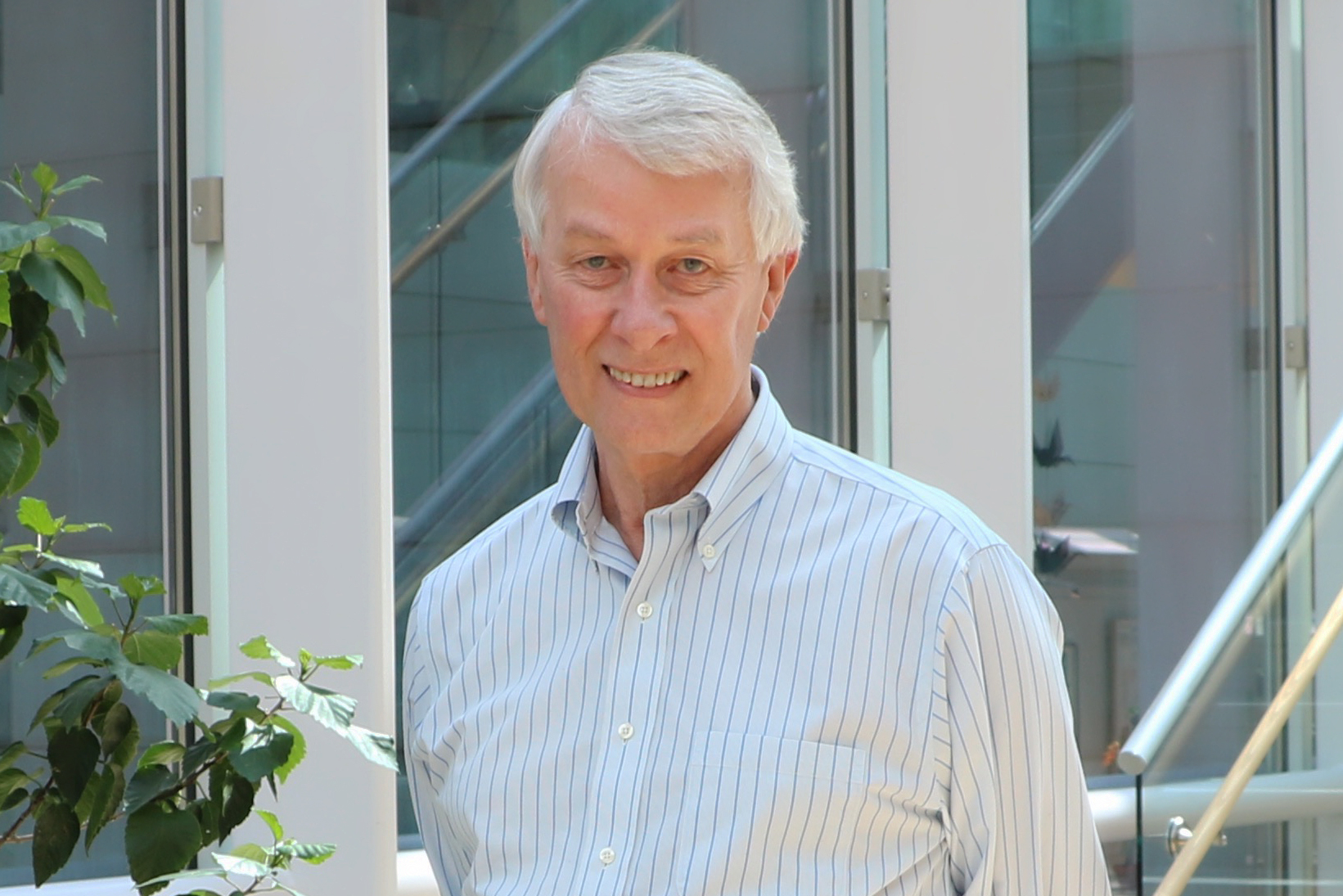|
|
Biography |
|
|
 Sir Richard Roberts is the Chief Scientific Officer at New England Biolabs, Beverly, Massachusetts. He received his Ph.D. from the University of Sheffield in Organic Chemistry and then moved to Harvard University in 1969 to work with Professor J.L. Strominger. In 1972 he moved to Cold Spring Harbor Laboratory under Dr. J.D. Watson eventually becoming Assistant Director. He first worked on the newly discovered Type II restriction enzymes in 1972 and in the next few years more than 100 such enzymes were discovered and characterized by his group. Cloning of the genes for several RM systems followed and studies of these enzymes have been a major research theme. Work on Adenovirus-2 led to the discovery of split genes and mRNA splicing in 1977 and he received the Nobel Prize in Physiology or Medicine in 1993. The 35,937 nucleotide DNA sequence of the Adenovirus-2 genome was completed in 1985. This required the extensive use of computer methods, both for the assembly of the sequence and its subsequent analysis and many of the key programs required were first written by his group. The further development of computer methods for protein and nucleic acid sequence analysis continues to be a major research focus. The field of DNA methyltransferases is also an area of active research interest and crystal structures for the HhaI methyltransferase both alone and in complex with DNA were obtained in collaboration with Dr. Xiaodong Cheng. From this work came the discovery of base flipping in 1993 whereby the target cytosine base that becomes methylated is flipped completely out of the helix so that it is accessible for chemical reaction. A consuming interest has been the semi-automatic identification of restriction enzyme and methylase genes within the GenBank database and the development of rapid methods to assay function. At present he is involved in a new initiative called COMBREX, which is aimed at connecting computational biologists who are making functional predictions for bacterial genes with biochemists who will test those functions experimentally.
Sir Richard Roberts is the Chief Scientific Officer at New England Biolabs, Beverly, Massachusetts. He received his Ph.D. from the University of Sheffield in Organic Chemistry and then moved to Harvard University in 1969 to work with Professor J.L. Strominger. In 1972 he moved to Cold Spring Harbor Laboratory under Dr. J.D. Watson eventually becoming Assistant Director. He first worked on the newly discovered Type II restriction enzymes in 1972 and in the next few years more than 100 such enzymes were discovered and characterized by his group. Cloning of the genes for several RM systems followed and studies of these enzymes have been a major research theme. Work on Adenovirus-2 led to the discovery of split genes and mRNA splicing in 1977 and he received the Nobel Prize in Physiology or Medicine in 1993. The 35,937 nucleotide DNA sequence of the Adenovirus-2 genome was completed in 1985. This required the extensive use of computer methods, both for the assembly of the sequence and its subsequent analysis and many of the key programs required were first written by his group. The further development of computer methods for protein and nucleic acid sequence analysis continues to be a major research focus. The field of DNA methyltransferases is also an area of active research interest and crystal structures for the HhaI methyltransferase both alone and in complex with DNA were obtained in collaboration with Dr. Xiaodong Cheng. From this work came the discovery of base flipping in 1993 whereby the target cytosine base that becomes methylated is flipped completely out of the helix so that it is accessible for chemical reaction. A consuming interest has been the semi-automatic identification of restriction enzyme and methylase genes within the GenBank database and the development of rapid methods to assay function. At present he is involved in a new initiative called COMBREX, which is aimed at connecting computational biologists who are making functional predictions for bacterial genes with biochemists who will test those functions experimentally.
|
|
|
|
|
|
|
Abstract |
|
|
|
|
The Nobel Lauretes campaign in favor of GMOs |
|
|
|
|
|
When Monsanto first tried to introduce GMO seeds into Europe there was a backlash by the Green parties and their political allies, who feared that American agri-business was about to take over their food supply. Thus began a massive campaign not against the true targets, Monsanto and the large agri-businesses, but rather against the surrogate target, GMOs. This has had disastrous consequences for one of the most promising technologies ever developed for improving food supplies. I am spearheading a campaign by the Nobel Laureates to counter the damage that is being done to the poor people in this world – notably in the developing countries – by Greenpeace and their allies who have deliberately ignored the science that underpins GMOs and have been painting horrific pictures of the dangers that might ensue. I will use Golden Rice as a clear example of the costs of these shortsighted policies. Millions of children have died or suffered developmental impairment because of a lack of Vitamin A in their diet. Golden Rice could reverse this, but has become a target of the Green parties because it is a GMO. This is foolish and dangerous. How many more children must die before this is considered a crime against humanity? I will argue that the Pope and the major religious organizations in this world could play a pivotal role in countering the pseudoscience being propagated by the so-called green parties and make a real difference to the lives of the poor in this world.
|
|
|
|
|